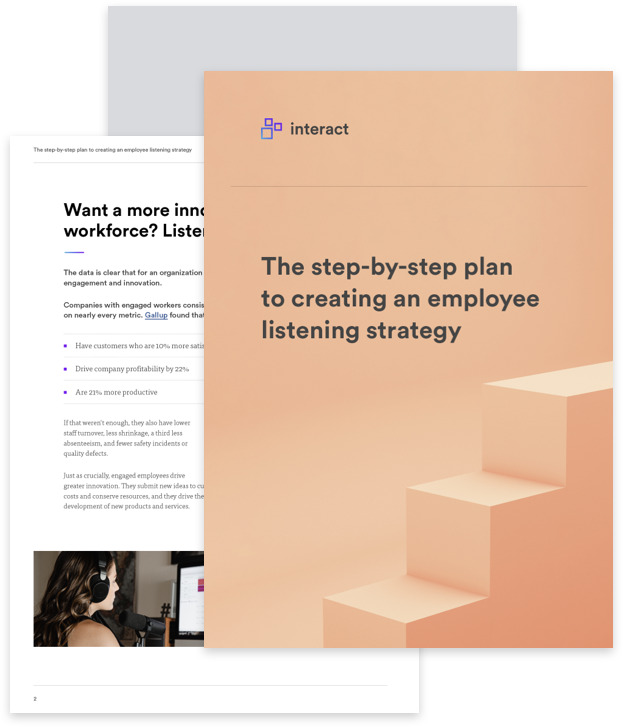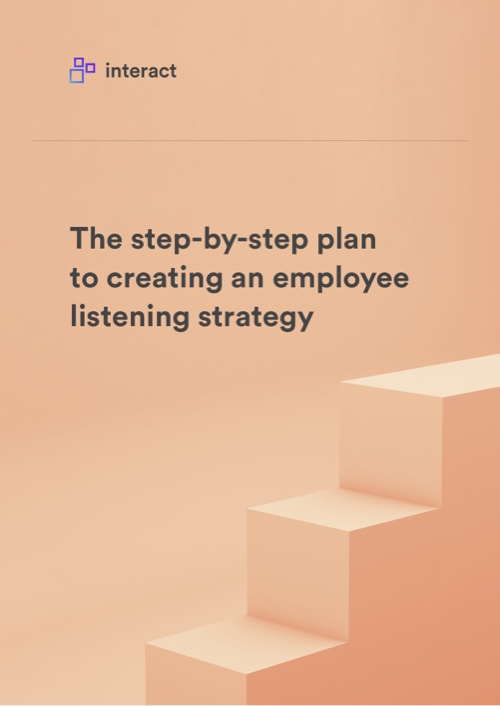Idea management software is an essential tool for innovation, employee listening, and engagement. But choosing a platform to manage employee ideas is no easy task. Should you build a custom solution in-house or buy one that comes as part of a modern intranet? This article will help you determine whether building or buying an idea management solution is the best approach for your organization.
As organizations grasp the transformative potential of harnessing their workforces’ ideas to drive change, foster innovation, and cultivate employee engagement, the demand for robust idea management platforms has surged.
Capturing employee ideas can be a win-win for all involved; your organization can access untapped innovation while employees get the increased sense of personal value and higher purpose that they crave. Yet, in an era of heightened financial scrutiny, companies are also laser-focused on maximizing value swiftly and efficiently, resulting in frequent calls for IT teams to optimize technologies and resources.
Against this backdrop, the rapid proliferation of accessible low-code technology, exemplified by platforms like Microsoft Power Apps, presents organizations with a pivotal dilemma. Should they embark on the potentially unpredictable journey of building an idea management platform in-house or leverage the expertise of a specialized vendor offering idea management functionality within a stable and secure enterprise intranet?
This decision transcends upfront costs; it revolves around careful evaluation of potential risks, benefits, and overarching impact on an organization’s operational efficiency and capacity for innovation. For many organizations, the best approach to take is far from clear. Considerations may include:
- Which option will offer the most value up front and over the long term?
- Which will garner the most usage from employees?
- Can an in-house solution compete with the managed flow of updates and new features expected from best-of-breed tools?
- What costs are associated with building in-house vs. adding the capability to my existing enterprise intranet?
If you’re considering implementing a new employee idea management solution, this article will help you decide whether your organization should build or buy.
The step-by-step plan to creating an employee listening strategy
Why implement an idea management solution?
As ever with enterprises, it’s a question of scalability.
While many companies have manual, labor-intensive mechanisms for idea collection, such as email inboxes, spreadsheets, ideation events, hackathons, or suggestion boxes, these methods often fall short in terms of engaging employees and driving innovation.
There are a few reasons for this.
The first is usage. To get employees to participate in an ideas program, your submission process needs to be straightforward and user-friendly. After all, sharing great ideas isn’t typically in an employee’s job description, so any inconveniences or difficulties can quickly become a barrier and cause them to give up. If employees are unclear on how to submit their ideas, have too many submission methods to choose from, or have to dig for instructions, they may not bother.
Another drawback of traditional idea collection is that it doesn’t do a great job of helping you manage the ideas you receive. This can lead to high-quality suggestions slipping through the cracks, overwhelmed staff, and disengaged employees who are frustrated by a lack of acknowledgment and follow-up. A lack of management capability also makes it hard to track the impact of ideas and report on them, doing nothing to encourage employee buy-in or further idea sharing.
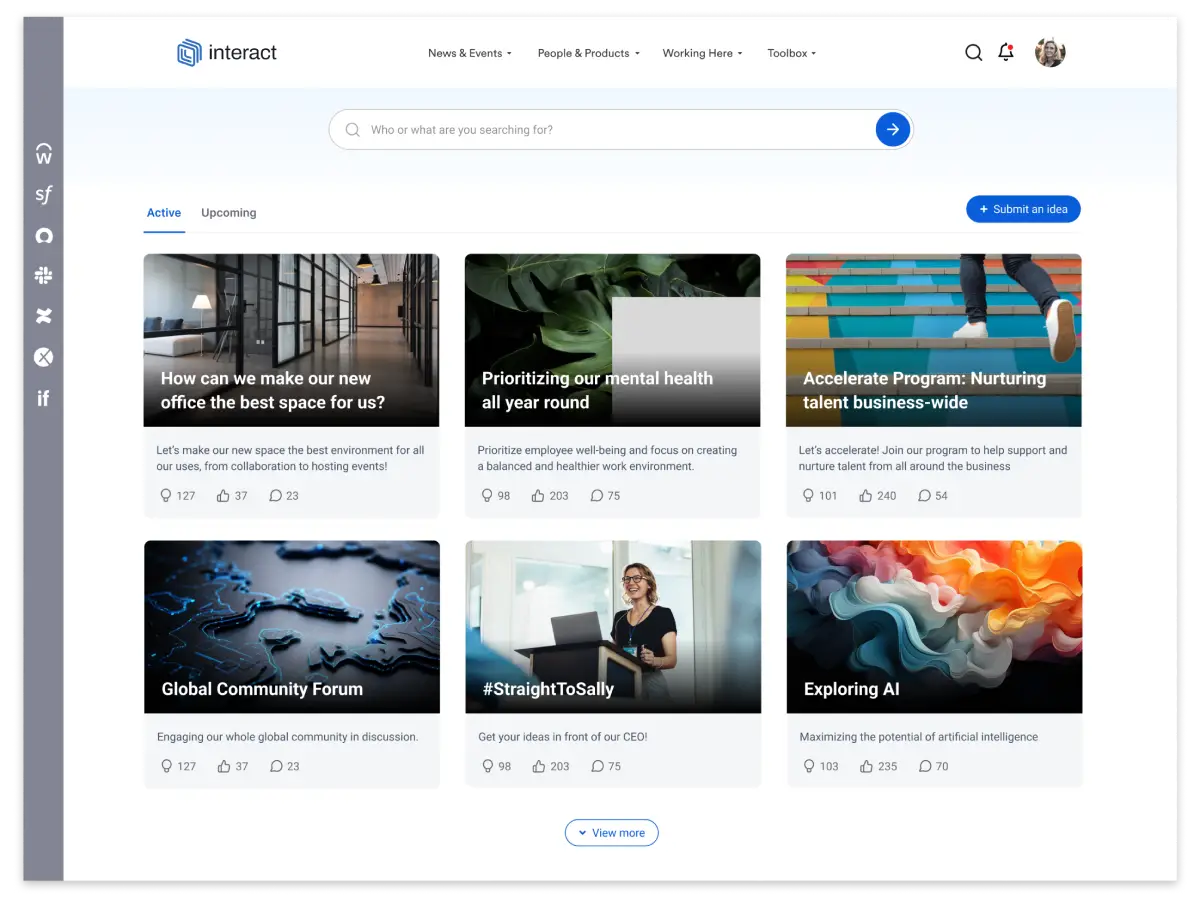
A dedicated idea management feature within your intranet, on the other hand, encourages employees to submit their ideas through your digital workplace, provides a standardized process for them to do so, and helps you easily manage ideas at scale once they’re received. Employee idea tools have several benefits, including:
- Improving the processes behind idea submission, management, and follow-up
- Boosting engagement by making employees feel heard
- Generating a consistent flow of valuable improvement and innovation ideas
- Facilitating buy-in for organizational change initiatives
Now that you know about the benefits of an idea management solution, you’ll need to decide what yours will look like.
Build vs. buy: three important considerations
If you’re looking to implement idea management software at your organization, two avenues are: build your own solution in-house, or work with an intranet platform that already offers an idea management tool.
There are several factors to consider. The right choice on whether to build or buy idea management solutions will vary depending on organizations’ unique circumstances. Here are the three most important considerations to keep in mind.
The step-by-step plan to creating an employee listening strategy
1. Cost
Cost is an important factor for any workplace solution and is probably top of mind at this stage in the decision-making process. If your organization wants to save money, it may seem smart to cut costs by doing the work to build your idea management platform internally. But while it may appear more cost-effective at the outset, building in-house can be deceptively expensive.
Potential hidden costs include:
- Licensing for the no-code tools used to build your platform
- Resources to plan and design the platform
- Internal/consultancy IT resources to build the platform
- Internal/consultancy IT resources to improve the platform with new features and functionality over time as needs evolve
- Resources to launch and support the platform
- Opportunity costs for the time your employees spend building, planning, and managing the platform
- Hosting costs for additional data
- The potential costs of additional software licenses if you choose to host the platform on M365, for example, but have employee cohorts without M365 licenses
- The “time to value” cost of a long build vs. the faster delivery of an out-of-the-box solution
In contrast, when you choose a specialized vendor like Interact, which offers Idea Management as a feature within a larger employee experience platform, costs should be transparent and predictable.
While many organizations do see some initial cost savings when they choose to build an idea management tool in-house, unforeseen expenses add up over time. It’s hard to predict the long-term cost of an in-house solution, especially when you consider that most organizations aren’t experts in idea management software. Plus, if your organization grows or shrinks due to organic or inorganic changes (e.g., mergers or acquisitions), there may be unforeseen changes that the in-house platform cannot accommodate without a significant overhaul.
On the other hand, a SaaS intranet solution like Interact provides continuous developments and access to new features at no additional cost, all developed by seasoned experts who understand customers’ diverse needs.
2. Time to value
Specialized SaaS solutions have an established reputation for offering a faster launch process than some in-house solutions, which allows organizations and employees to reap their benefits sooner.
In-house idea management solutions such as those based on Power Apps may encounter delays due to internal resource prioritization and limited experience in the employee ideas domain. These in-house projects typically require anywhere from three to six months for full deployment. The timing can be even more unpredictable due to unforeseen roadblocks stemming from a lack of experience with idea management software.
Based on the launch process alone, even if you choose to implement a new intranet with idea management capabilities, going with an established vendor may mean your new tools are available sooner.
Once an in-house solution is launched, achieving feature parity with top-tier specialized SaaS products can be a challenge for custom projects. Consequently, even after launching, the time required to realize tangible value, including ideas generated, engagement levels, and ideas brought to fruition, can be longer.
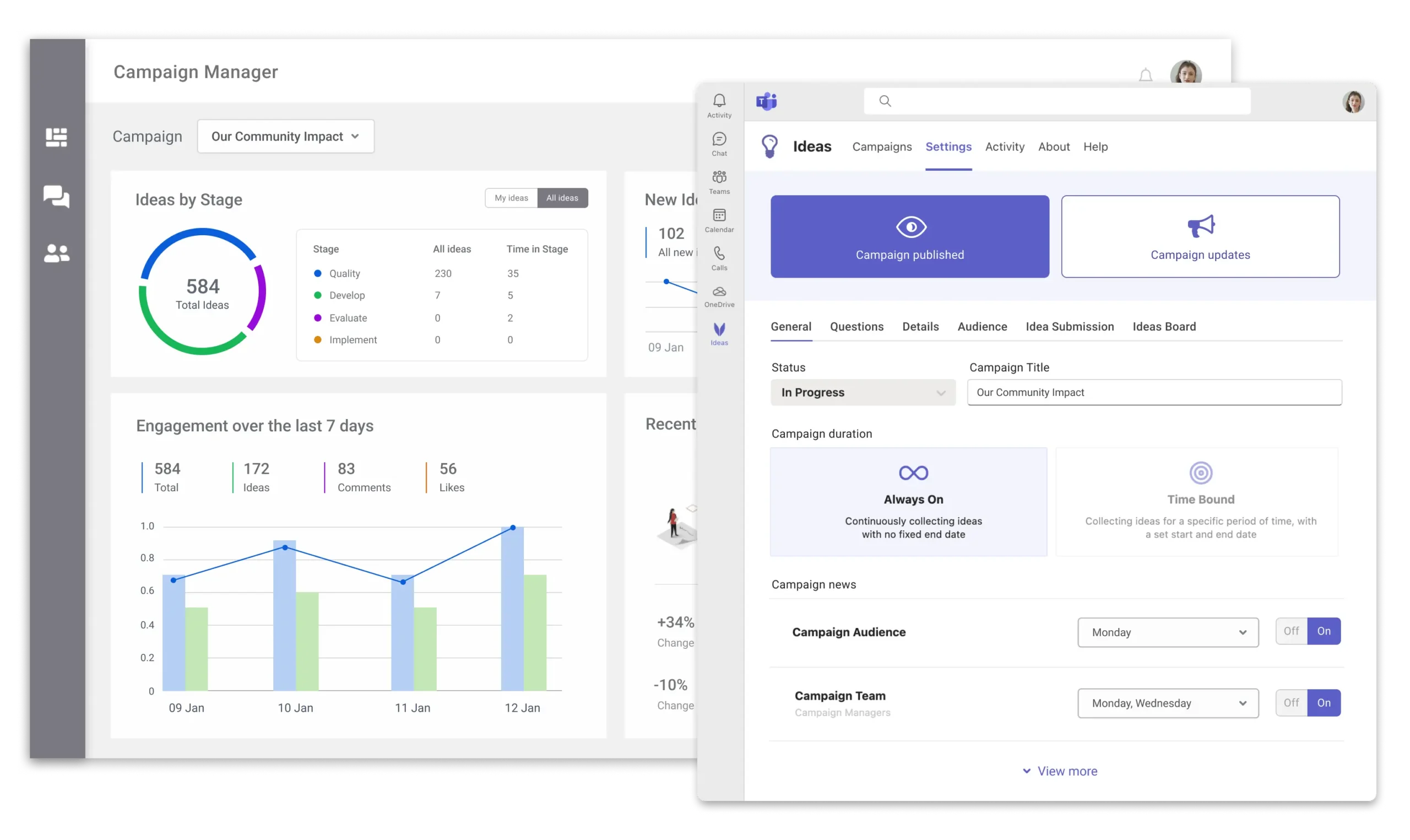
3. Configurability and scalability
Typically, in-house solutions are tailored for a single purpose. In the context of employee ideas programs, this often translates to being designed for a single idea management program, also known as a campaign, challenge, or event. When organizations aim to run multiple diverse programs with distinct configurations and attempt to scale them, this becomes a significant challenge.
Different programs typically require various setups, encompassing workflow automation rules, communication protocols with idea submitters, data fields for collecting idea-related information, and criteria for expert reviews. For individuals who oversee employee ideas programs, particularly those without a strong background in development or IT administration, these configurations may not be user-friendly. This means they may need to rely on IT resources for any adjustments or new launches, causing delays, bottlenecks, and increased stress on internal teams.
Reputable idea management capabilities within your intranet simplify these processes by enabling editing and customization by average users in an intuitive manner. Their pre-built solutions should allow you to scale ideas initiatives as extensively as desired without being dependent on IT support, ensuring a streamlined, efficient workflow.
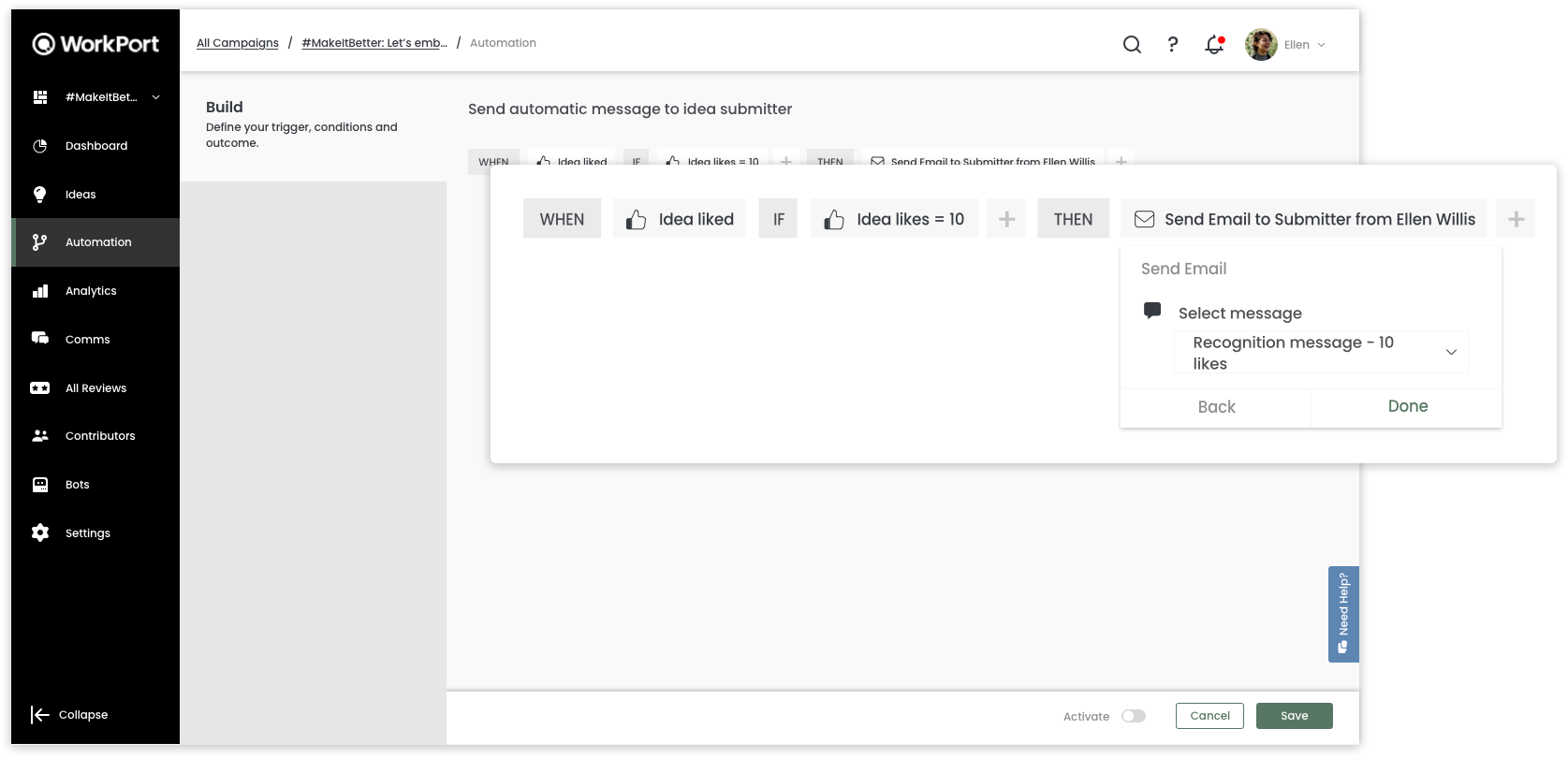
So, should you build or buy idea management software as part of an intranet?
Ultimately, the decision to build or buy an idea management solution will come down to the unique needs of your organization. That said, after weighing the two options, many organizations conclude that buying as part of your intranet platform makes more sense.
When you’re aiming to reap the benefits of employee ideas at your organization, decisions like building or buying can make a big difference. Selecting the right idea management solution will lead to a more successful employee listening strategy, higher employee engagement, increased retention, organizational transformation, and better ROI from employee ideas. We hope the information in this article has been useful in making the best decision for your organization.
